Original air date: 7 December 2005

Below is a more detailed look at the outline the contents of this programme

Selected sequences
Most archaic spider – a segmented body

In most spiders the segmentation can’t be seen from the outside – it is still there!
Silk as an adhesive – lacewings
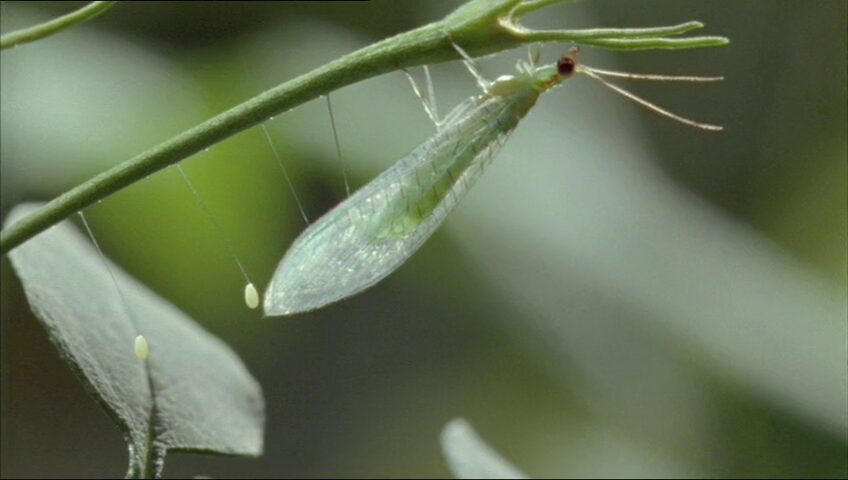
A lacewing lays eggs using an adhesive thread (made of silk) – this seems to keep them far enough from the stalk so those hunting by smell (eg. ants) won’t find them (below)

Ants walking right past a tasty meal !
Construction of the web
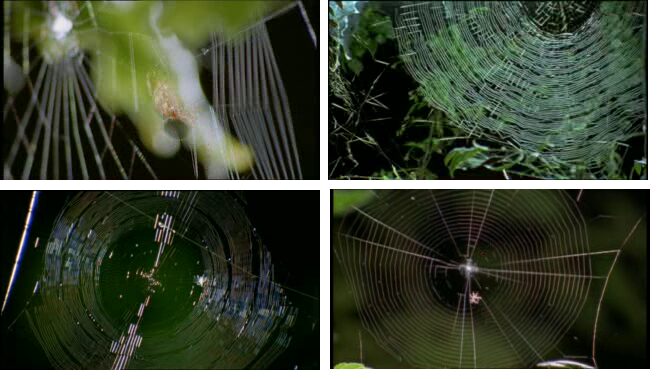
The construction may only take a single hour
Several steps in constructing a spider web
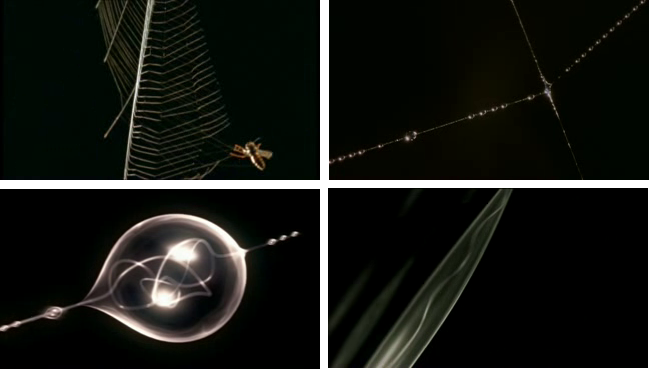
Catching a prey in the web is a major challenge. As the prey (17’02) gets entangled the web has to give in to a certain degree but not too much. It also has to have sticky beads of glue (top right) that give in as the web stretches, a bead (bottom left) stretches (bottom right, 17’25) to make the web elastic.
A 3D spider web of the redback

The redback spider in Australia builds a 3 dimensional web (both high and deep)

An insect, has blundered into one of the threads that have been strewn all over the floor. In this case an ant leading an exploration party. As it is caught the string pulls back and the spider is in no hurry to take care of the prey, it is going nowhere. Being economical with its silk it recycles it.
Bolas spider
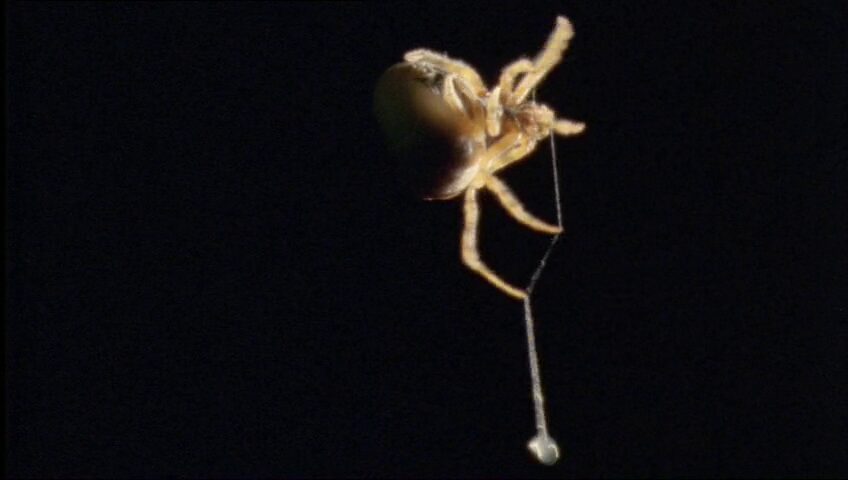
It is very economical with its silk, uses only a single strand and apparently uses pheromone with the right smell for the kind of prey that is around at the time !!
Solitary hunters turn pack hunters (32’50-36′)
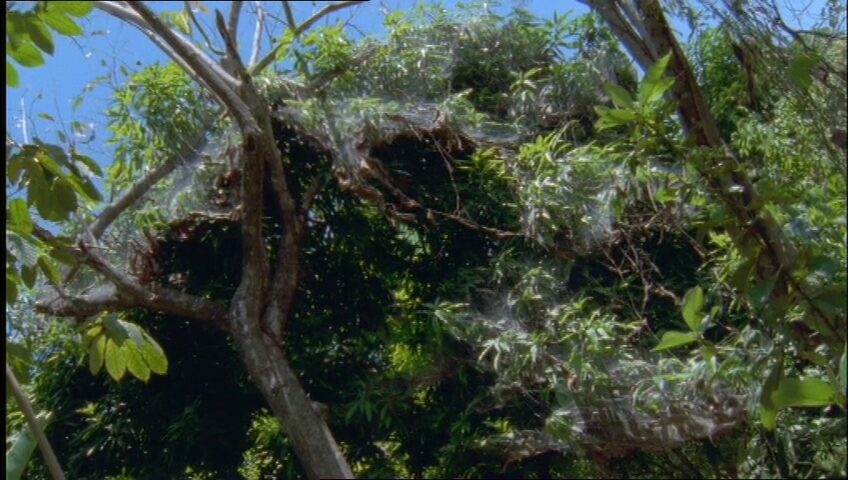
Web spinning can even change spiders’ character – normally solitary spiders turn pack-hunters and share the spoils (33’10). Hunt much bigger prey with very large webs.
Only a few of the unforgettable sequences of the programme have been included. Filming is absolutely jaw-dropping.
Final words
“Ingenious though we are, we’ve not yet been able to invent anything as strong, as light or as elastic as silk.”
Digging deeper, recent scientific discovery
These final words of Attenborough’s were quite true at the time the series was produced. It seems not until almost two decades later (2024) that scientists may have managed to produce silk in a similar way to how spiders do it.
It seems also quite interesting that spiders tend to not construct a more robust web than needed depending on the circumstances. The same species would build a more robust one where the environment demands it, heavier rainfall or closer to a waterfall – presumably.